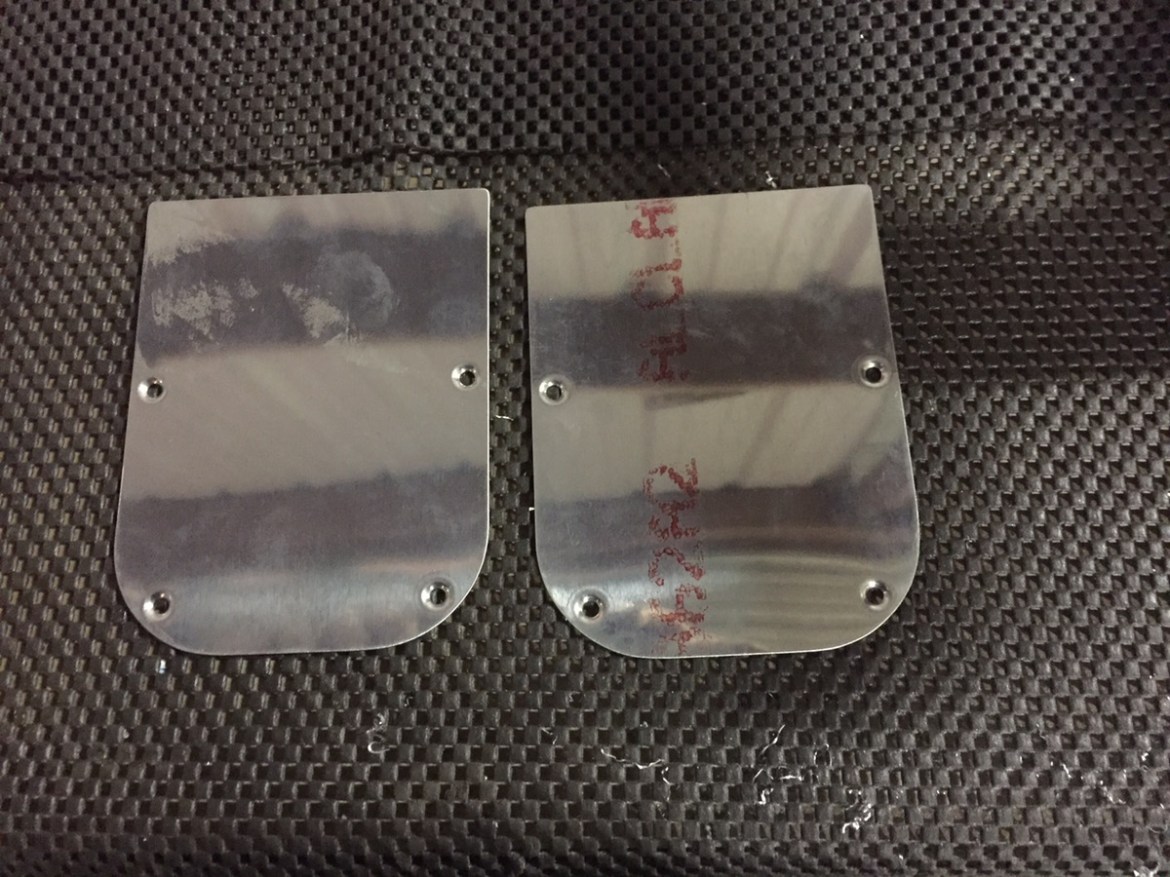First up today, I wanted to find a solution for the rudder cable routing holes through the center section. The drill and bit were too long to have proper perpendicular access. Easiest solution I could come up with, was to cut the drill bit a little bit shorter, so thats exactly what I did. 
As you can see, drilling the aft could only be accomplished from the the front. Here is the fully drilled hole. I made sure to do a good job deburring everything, which was a little more challenging that other areas.

Next I figured I would attached the rudder cable protective tubes to the bushings at the rear passenger foot wells. My technique was to us a #40 drill. I protected the cable from the drill with a large black zip tie shoved in the tube. The black was easy to see through, and by being careful I was able to accomplish the task quickly and easily. 

Here’s the end product. It isn’t sexy, but its cheap and effective. 
I want to install the rudder fairings in the near future. I plan to pro-seal them in place. To do so, I wanted to be able to play with the position of the aft plastic protective tubes, so I needed to put the clamps in place.


Moving around the cockpit is a pain, and as I didn’t have any floor in the main part of the cockpit I needed to quickly cut some scrap wood to make a platform.

Now that the rudder cables are routed all the way to the front, I turned my attention to the rudder pedals. First, I drilled the holes on the brake pedals for attachment to the brake master cylinders. Sorry, I forgot to take a picture. After that, I realized there was nothing left to do, other than bolt it all together and check for free movement. Before I do that, I plan to paint the appropriate parts, and the interior of the airplane. But, I hadn’t finished the rear seat rudder pedals yet. Next!
First you need to attach these bad boys. This required removing the bolts. Only one hole is match drilled. (The one on the left in the photo) So the right bolt hole needs to be match drilled. This is a challenge with the gear tower geometry but with the angle drill, I was able to make it work.

Next up you need to fit the brackets for the push rods. These are attached to the center section and the ribs of the front seat. 
There’s not a lot of room here. The bottom of the bracket is not pre-drilled. Measure a line straight back, and then measure the centerline (5/16) on the bracket. This will allow you to find the appropriate location of the bracket’s outboard hole. Drill this first. 
The inner nut plate’s location isn’t critical according to the plans. And thats good, because its a pain in the ass. First off, for some reason there is one set of holes already pre-drilled. They’re not well aligned, and they don’t meet the bracket exactly where you’d like them to. So the option is drill the bracket perfect and have oblong holes on the bottom, or drill as best you can to the pre-drilled points and accept a little wiggle room on the bracket. As Van’s said the inner nut plate isn’t critical, I went with the latter. Its not like this is a high stress area needed for structural integrity of the aircraft.

Here is the eventual result on the left. It takes awhile given the awkward position I had to contort into. Plus, you need to drill all three holes, countersink, and match drill the bracket. 
Here’s the bracket on the left. I’m very happy with the placement of both nut plates. Unfortunately, the right bracket was less cooperative, and the inner screw has very little edge distance. But again, not critical in my estimation.

I primed and painted the insides of the rudder cable fairings. 

Here’s what they’ll look like when installed. I’m very happy with this essentially free customization. 

Somewhat frustratingly, I think I have finally arrived at the perfect point for painting the majority of the interior. But with winter underway, its unlikely the weather will cooperate in the near future. I’m making a mental note that the next warm dry spell equals painting. The rudder pedals, and controls are all ready for installation. All floors and seat panels are ready for installation. I’d like to paint the sides and other areas before installing many of these items for easier access.
























